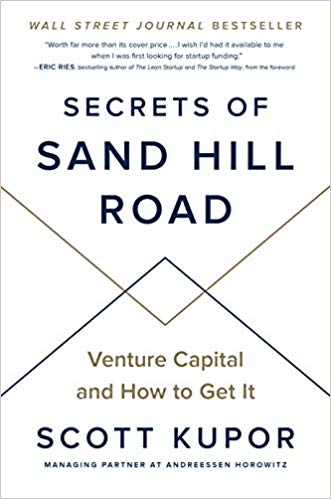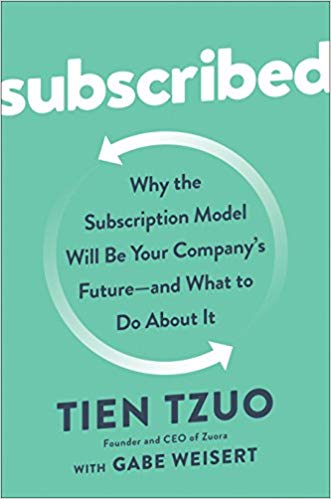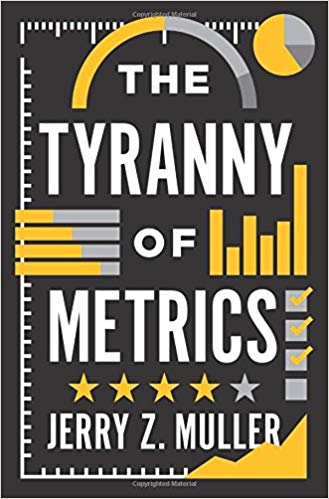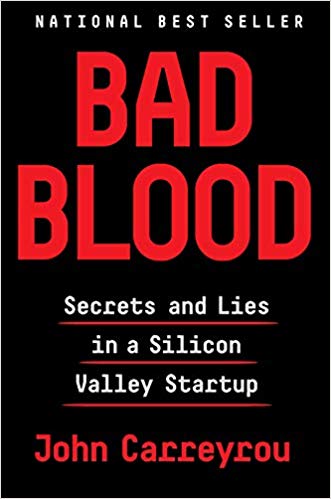5 Takeaways from Secrets of Sand Hill Road
Venture Capital is a term that conjures a lot of excitement. But what is it exactly? Who benefits from it?
Secrets of Sand Hill Road: Venture Capital and How to Get It by Scott Kupor introduces business owners to that source of financing known as venture capital (VC).
Summary
Scott Kupor is managing partner at the VC firm Andreesen Horowitz. Sand Hill Road refers to a road in Silicon Valley where many VC firms are located.
Venture Capitalists are investors. Specifically, they raise investment funds from individuals or entities known as Limited Partners (LP’s) and invest these funds in start-up companies. Limited Partners include endowments, foundations, pension plans, family offices, and funds of funds. VC’s and their partners make money if the companies they invest in are acquired or go public, and lose money if the companies fail.
Secrets of Sand Hill Road covers many areas as they relate to venture capital, including what VC is, how firms decide to invest, term sheets, and other topics.
5 Takeaways from Secrets of Sand Hill Road:
1. Is VC right for you? VC is one source of capital. Other sources exist, such as bank loans or MRR financing. VC can be attractive, especially for tech companies, because banks don’t like lending to businesses with few hard assets for collateral. In addition, banks might resist investing in high-risk start-ups.
VC is an equity option, allowing companies to avoid cash outflows for debt servicing when they often lack strong cash flow. Equity financing allows long-term access to funds (i.e., funds that don’t have to be paid back right away). However, VC can be expensive. It involves giving up some percentage of ownership in the the company and usually a board seat.
2. What VC’s look for in investments. To raise VC money you need to have a sufficiently large target market. VC’s need to make a high return on their portfolio to justify the high risk and long periods of illiquidity. Most of their investments fail. Therefore, every company VC’s invest in must have potential for a huge upside to cover the cost of all the other failures (the rule of thumb is the potential for a 10x return).
VC’s also look at the founder/founding team, product-market fit, and strength of the product. What makes these things special? Why invest in this company over other ones?
3. How much money should you raise? Raise enough money to get you to the next round of financing. This requires you to think about the next round of financing during the current round. How much money would you need to hit the next milestone?
Be careful not to raise too small an amount at too high a valuation. A higher valuation today sets a higher hurdle for your next valuation, with fewer capital resources to get you there.
4. How old is the VC fund that is investing in you? VC firms put together funds with a lifespan of around 10 years. As the fund matures, there is greater pressure on the VC firm to cash out to generate returns for the LP investors.
If you get money from a fund that is halfway through its life and hasn’t had other winners in the portfolio, you could receive more pressure to cash out early. In addition, older funds might not have any “reserves” — money VC’s set aside to invest in subsequent financing rounds.
5. How do VC’s value your business? Common methods of business valuation include the discounted cash flow method and the comparable company method. These methods face limitations with start-ups, since many of them don’t yet have any cash flow and there might not be directly comparable public companies.
So VC’s might start from the bottom up. For instance, if the VC could invest $10 million for a 20% ownership stake, what would it take to get a 10x return? A 10x return would be $100 million, meaning the company has to sell for $500 million (since the VC owns 20%). The VC would then look at your company with that payout target in mind. Is the target market big enough to support growing to that size? What would cause the company not to get there? How strong is the product?
Bonus takeaway: How to network with VC’s. So how do you meet a VC anyway? Get to know angel investors, seed investors, and law firms. These people interact with start-ups earlier than VC’s do–they are “upstream” in the start-up’s life cycle. VC’s develop relationships with them so they can learn about good opportunities coming down the road.







